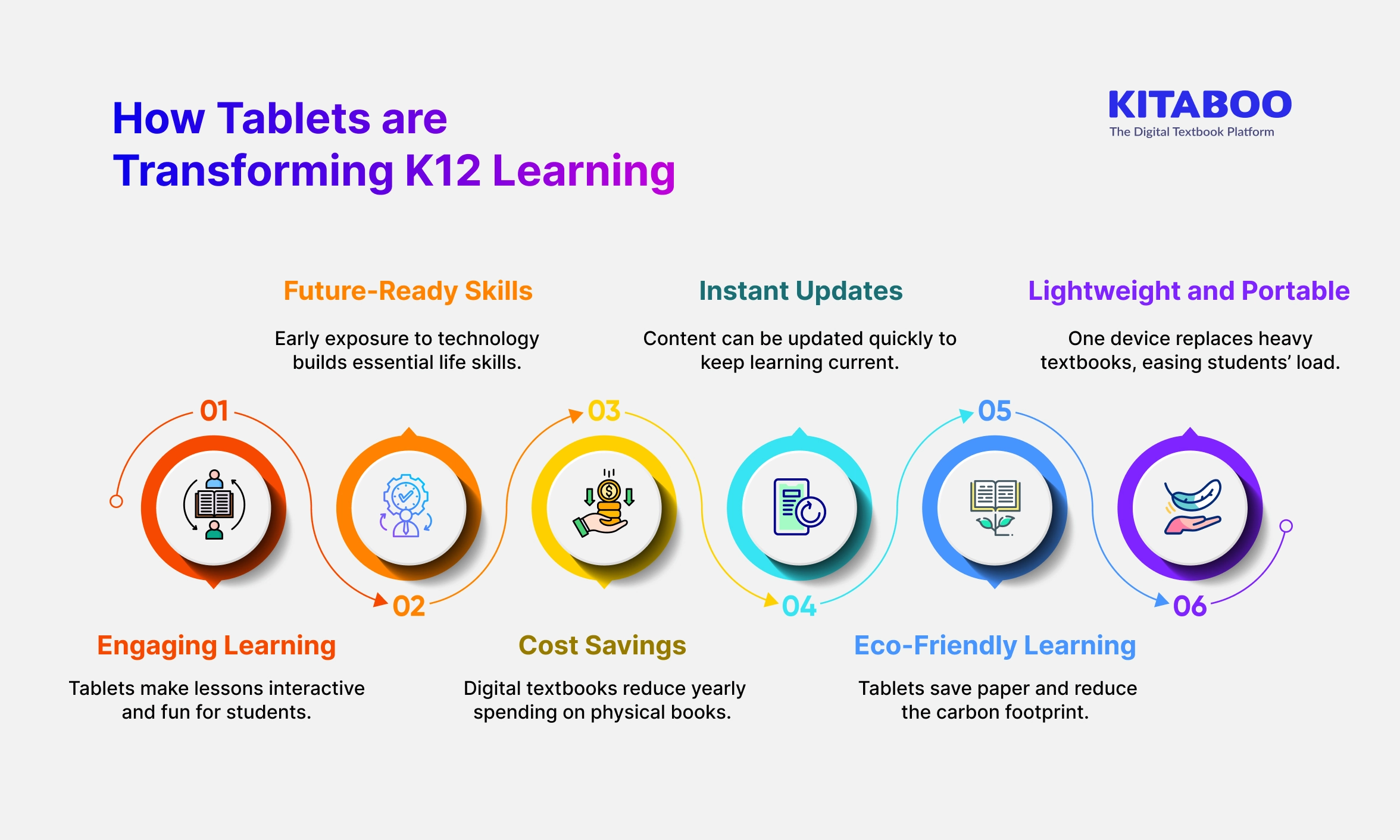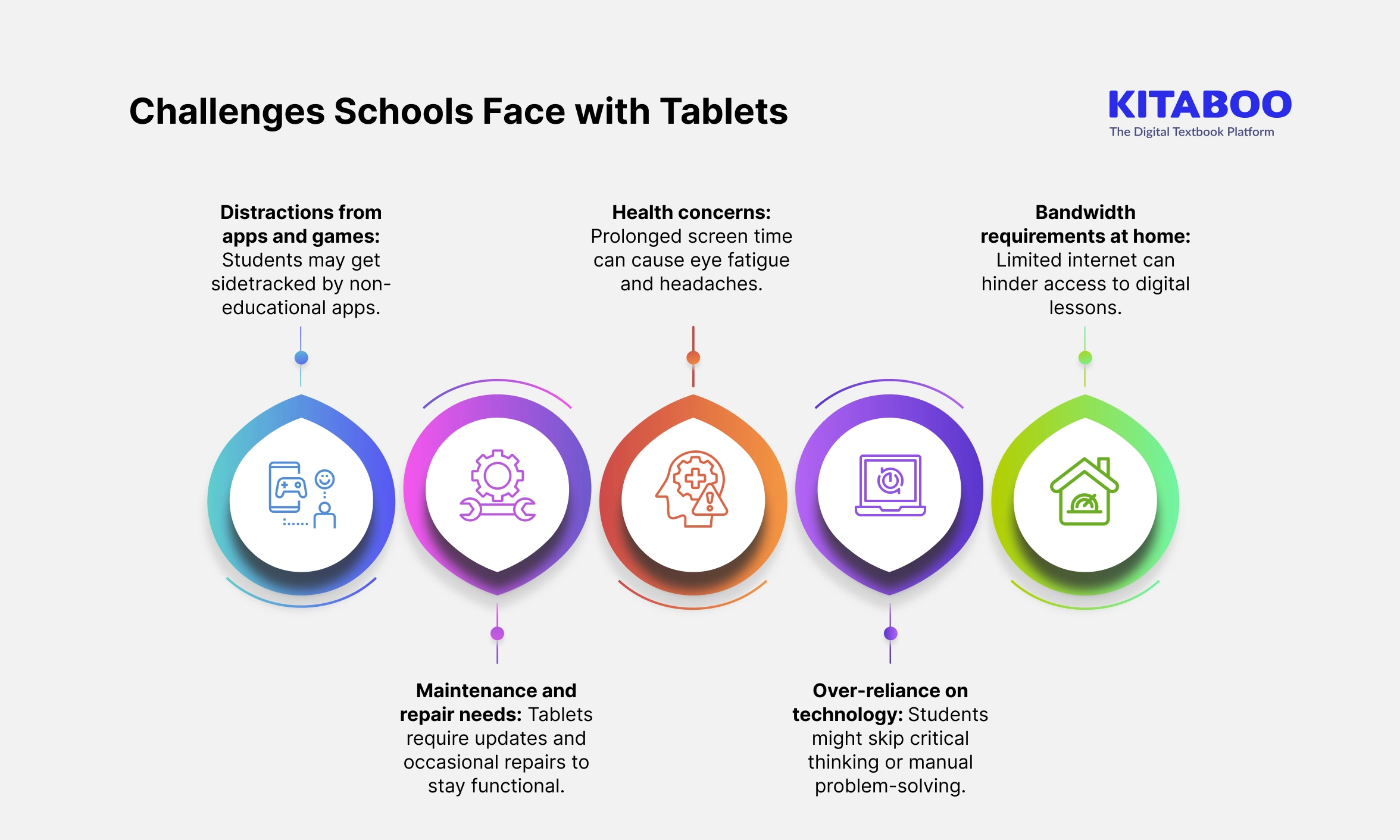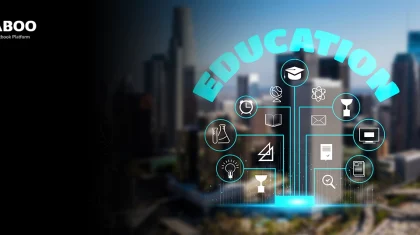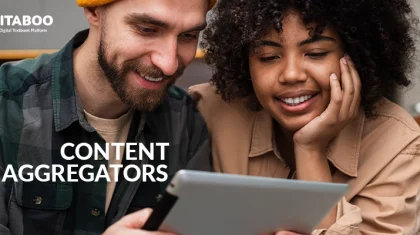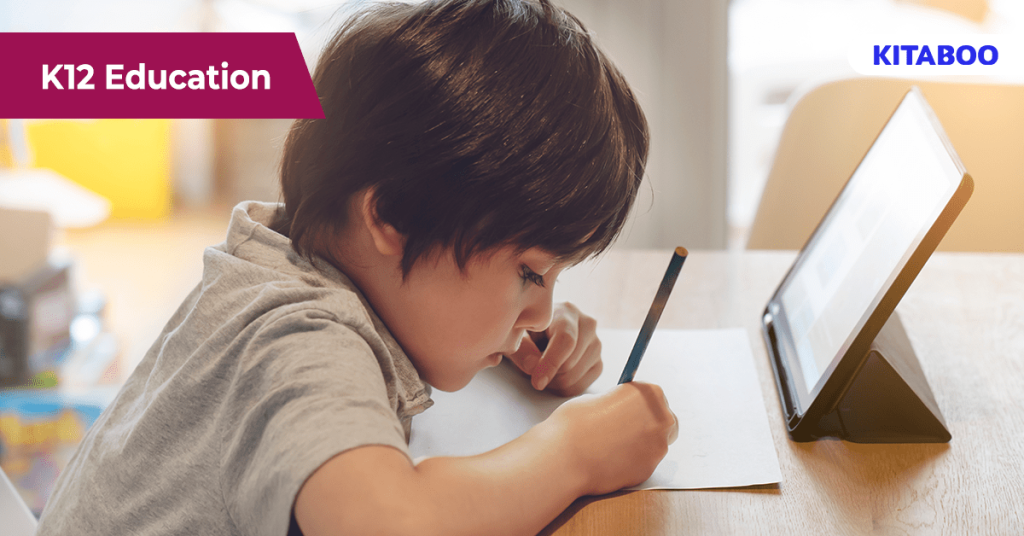
Should Tablets Replace Textbooks in K12 Schools? (2026)
Summarize this blog with your favorite AI:
Should Tablets Replace Textbooks in K12 Schools? – TL;DR
When debating whether tablets should replace textbooks in K12 schools, it’s clear that digital textbooks offer several advantages. Tablets make learning more interactive, portable, and cost-effective. While there are some challenges of using tablets in education, proper planning can maximize their benefits for students and teachers alike.
| Aspect | Tablets with Digital Textbooks | Printed Textbooks |
|---|---|---|
| Portability | Hundreds of textbooks on one lightweight device. | Heavy, limited to what students carry. |
| Engagement | Interactive content, videos, and quizzes. | Static text and images. |
| Cost | Cheaper over 3–5 years with updates. | Higher costs with new editions. |
| Updates | Instant updates for new content. | Must purchase new editions. |
| Accessibility | Offline access and cloud syncing. | Only available physically. |
| Space & Weight | Saves classroom and bag space. | Bulky, adds weight. |
| Environmental Impact | Paperless and eco-friendly. | Uses paper, ink, and shipping. |
Tablets have taken over laptops and computers both at work and in schools. Being an $18 billion industry, tablets are owned by 53% of U.S. adults, 42% of U.S. children aged under 8, and 81% of U.S. children aged 8 to 17.
As tablets gain popularity, the debate over tablets vs textbooks in K12 has intensified. Tablets offer portability, interactive content, and instant updates. But they also present challenges like distractions, maintenance, and internet dependency.
Let’s explore the benefits of tablets in schools. We will find the answer to the question, Should tablets replace textbooks?, as we also highlight the challenges of tablets in education.
Table of Contents
I. What are the Benefits of Tablets in School over Printed Textbooks?
- Tablets Increase Interest
- Tablets Prepare Students for a Technology-Driven World
- Tablets Are More Affordable than Textbooks
- Tablets Can Be Updated Instantly
- Tablets Save the Environment and Money
- Tablets Are Lightweight
II. What are the Challenges of Tablets in Education over Printed Textbooks?
- Tablets Can Distract Students
- Tablets Require Proper Maintenance
- Tablets Can Cause Health Issues
- Tablets Can Make Students Overly Dependent on Technology
- Tablets Require Internet Bandwidth at Home
III. How Can Schools Transition from Textbooks to Tablets?
IV. How Can Schools Improve Tablet Device Management & Equity?
V. Are Tablets More Cost-Effective than Textbooks Over 3-5 Years?
VI. Can Tablets Work Reliably Without a Strong Home Internet?
VII. How do Schools Manage Lost or Damaged Devices?
VIII. Conclusion
IX. FAQs
What are the Benefits of Tablets in School over Printed Textbooks?
Tablets and digital textbooks in K12 offer significant advantages over printed textbooks in classrooms. Exploring the benefits of tablets in schools helps you figure out the answer to the question: Should tablets replace textbooks?
1. Tablets Increase Interest
Studies have revealed that students get disheartened and stressed when they are unable to keep up with their peers in K12 education. Using tablets makes learning fun and easy for students who have difficulty recalling what has been taught earlier.
With better graphical descriptions and illustrations, eBooks on tablets make it easier to keep students interested in the subject. Thus, multimedia learning helps students comprehend things easily and raises their interest levels.
Also explore: Digital Publishing Platform for Association and Societies
2. Tablets Prepare Students for a Technology-Driven World
The world outside school is highly competitive. Students who learn technology skills early in life are better prepared to face the corporate world challenges.
Tablets are used extensively at work, and students must be prepared to adapt to their usage from the start.
The highest-paying and fastest-growing jobs in the U.S. are technology-intensive. More focus should be placed on knowledge along with job-oriented skills, and utilizing tablets for K12 education is an added advantage.
Also read: Secure Your Intellectual Property: The Importance of DRM for Member-Based Organizations
3. Tablets Are More Affordable than Textbooks
Schools always encourage students to refer to additional books right from 7th grade. The money spent on purchasing textbooks for a senior secondary class student for one year is far more than a tablet’s price.
Using tablets instead of printed textbooks can be way more affordable than we imagine. Moreover, tablets can hold several textbooks on one device. This allows students to easily access various reference materials rather than using just a single book for a certain subject.
4. Tablets Can Be Updated Instantly
eBooks can be updated quickly on a tablet to incorporate new information or editions. It is especially advantageous for subjects such as Computer Science or Biology, where information is constantly updated.
Moreover, it is easy to pass on or share the added information with others. This is also beneficial for schools as they don’t have to frequently buy new software, hardware, or fresh physical copies of textbooks. As tablets are handy, they can be accessed for studying from any location at any time.
5. Tablets Save the Environment and Money
eTextbooks on tablets cost less than physical or printed textbooks. The average price of a K12 print textbook is higher than a 6-year digital textbook subscription.
If all schools switched to tablets from printed textbooks, it would be both cost-efficient and eco-friendly. Writing notes on tablets will save paper. Assignments, presentations, tests, and other projects can be more interactive via tablets.
6. Tablets Are Lightweight
Over time, various suggestions have been made across the world on the weight of a student’s school bag. It is a popular suggestion that school-going students must not carry more than 15% of their weight. However, these suggestions are not always followed. This not only leads to back pain issues but also causes tiredness after school.
While printed textbooks and laptops are heavy, a tablet usually weighs under 2 pounds. Thus, a tablet eliminates the need to carry bulky textbooks and provides relief to students.
What are the Challenges of Tablets in Education over Printed Textbooks?
While tablets offer many benefits, they also come with certain obstacles. Understanding the challenges of tablets in education helps balance the tablets vs textbooks in K12 debate.
1. Tablets Can Distract Students
Too much technology can also be harmful to students. They may pay attention to emails, apps, websites, and games rather than their studies.
Young students may not be able to resist distractions like social networking sites and addictive games that are easily accessible via tablets. As a result, they end up spending most of their time on such distractions instead of paying attention to classes.
2. Tablets Require Proper Maintenance
Tablets are valuable gadgets that can be stolen or lost, resulting in the loss of studies for students. Moreover, a broken tablet needs a professional to fix, which can be time-consuming and costly.
On the other hand, textbooks can generally be repaired with simple supplies like tape or glue. Furthermore, physical textbooks cannot freeze, get hacked, or crash. And unlike tablets, there is no possibility of getting spyware, malware, or having personal data stolen from a physical textbook.
3. Tablets Can Cause Health Issues
Handheld technological gadgets cause Computer Vision Syndrome, headaches, eyestrain, itchy or dry eyes, and blurred vision.
People who use handheld gadgets often are more prone to musculoskeletal disorders related to repetitive muscle strain, including neck pain, fibromyalgia, carpal tunnel syndrome, and shoulder pain.
4. Tablets Can Make Students Overly Dependent on Technology
With tablets, students can avoid analyzing texts themselves and reading on their own as they can simply search for paragraphs in an eBook and look for answers on the internet.
With auto-correct and editing tools available on tablets, students can also avoid the need to remember grammar rules and spellings.
The practice of handwriting and reading textbooks will also be lost.
5. Tablets Require Internet Bandwidth at Home
Students require a strong internet connection with high bandwidth to access digital content and to finish internet-based homework. Low-income families might not be able to afford as much internet bandwidth.
Furthermore, institutions would also need to provide Wi-Fi connections and sufficient bandwidth, which can be a challenge when catering to a large number of students.
How Can Schools Transition from Textbooks to Tablets?
Switching from traditional textbooks to digital tools takes thoughtful planning. Understanding the benefits of tablets in schools helps educators prepare better for this transformation.
Transitioning carefully makes adopting tablets more manageable. With proper training, infrastructure, and content, educators can enjoy the full benefits of tablets in schools.
Schools need a clear strategy to make this shift smooth and effective.
1. Train Teachers and Students
Training is essential for success. Teachers must learn to integrate tablets and digital textbooks in K12 classrooms. Workshops and continuous support will help them feel confident with new tools.
Students also need guidance to use tablets responsibly and effectively for learning.
2. Strengthen Wi-Fi Infrastructure
Reliable connectivity is crucial. Schools must invest in strong Wi-Fi networks to ensure uninterrupted access to learning materials.
This also helps students use online features like cloud storage and collaboration. A good network is key to overcoming the challenges of tablets in education.
3. Focus on Content Licensing
Content licensing ensures schools use legal and up-to-date digital resources. Licensed content provides accurate, curriculum-aligned material without copyright issues.
Schools gain instant access to multimedia textbooks, interactive modules, and assessments. The interactivity-boosting elements improve learning engagement and retention.
This advantage of tablets will rest the debate of tablets vs textbooks in K12 classrooms with a clear winner.
How Can Schools Improve Tablet Device Management & Equity?
Managing devices and ensuring equal access are critical for adoption of tablets and digital textbooks in K12. Educators must maximize the benefits of tablets in schools while reducing barriers for every learner.
1. Centralized Device Management
A proper management system helps track and maintain school-issued tablets. IT teams can update software in tablets regularly to create and push new digital textbooks in K12. They can also monitor tablet device health remotely.
This reduces downtime and makes tablets vs textbooks in K12 a more practical and easier choice.
2. Regular Maintenance and Support
Tablets require periodic updates, repairs, and troubleshooting. Schools should establish a dedicated support team or partner with vendors.
Proper maintenance ensures tablets stay reliable and ready for students, minimizing the challenges of tablets in education.
3. Equitable Device Distribution
Not all students have equal access to technology at home, creating learning gaps. Schools should establish lending programs or provide take-home tablets to ensure fairness.
Offering devices to every student supports consistent access to resources and learning opportunities. This approach strengthens the case for replacing textbooks with tablets in education.
Are Tablets More Cost-Effective Than Textbooks Over 3-5 Years?
Over several years, tablets can reduce costs compared to printed textbooks. Schools save on printing and distribution.
With digital textbooks in K12, updates are instant, and subscriptions are cheaper than buying new editions annually. Lower maintenance costs and bulk licensing make tablets a long-term, cost-effective investment for schools.
Can Tablets Work Reliably Without a Strong Home Internet?
Yes, tablets can store content offline. Tablets allow students to download digital textbooks in K12. Once downloaded, they can access lessons, quizzes, assignments, and more, even in an offline environment.
While internet is needed for updates, offline access ensures consistent learning even in areas with weak connectivity.
How do Schools Manage Lost or Damaged Devices?
Schools often use mobile device management (MDM) software to track tablets. Insurance or repair programs help minimize costs and downtime.
This planning ensures that tablet use in K12 education remains sustainable and efficient. Clear device policies and student training further reduce risks and safeguard tablet investments.
Conclusion
So, should tablets replace textbooks in schools?
Tablets with digital textbooks in K12 offer clear advantages. They reduce costs, save space, provide instant updates, and support interactive learning.
Considering the benefits of tablets in schools, they must be combined with proper device management ensures equitable access. This approach will also help in addressing the few challenges of tablets in education.
Overall, tablets can gradually replace traditional print textbooks, enhancing engagement and modernizing learning.
If you’re planning to bring tablets into your classroom, consider partnering with KITABOO, a cloud-based digital publishing platform that allows you to create and distribute content with ease. With KITABOO, you can create highly interactive eBooks, accessible across devices and offline as well!
Contact our expert team now.
To know more, please write to us at contact@kitaboo.com.
Suggested Reads:
- Best eBook Authoring Tool
- Best Cross-Platform eBook Readers
- The Role of Technology in the Workplace
- Should Tablets Replace Textbooks in K12 Schools
- Advantages of eBooks Over Printed Books
- Advantages of eBooks Over Printed Books
- Is Online Education Better than Traditional Education?
- Digital Textbook Platform for K12 Publishers
- Digital Textbook Platform for Associations & Societies
- Digital Textbook Platform for Trade Publishers
- Digital Textbook Platform for Training Companies
- Digital Publishing Solution for Content Aggregators
FAQs
EPUB and interactive PDF formats provide multimedia support and better engagement.
Yes. Most tablets allow downloading of digital textbooks and assignments for offline use.
Students can share notes, highlight sections, and interact with multimedia content in real time.
Yes. Tablets reduce paper use, printing, and transportation, though device manufacturing has a trade-off.
Digital textbooks should be updated annually or as curriculum changes to ensure accurate, current content.
Discover how a mobile-first training platform can help your organization.
KITABOO is a cloud-based platform to create, deliver & track mobile-first interactive training content.
